Toyota Industries was the “elephant in the room” at ProMat this year. Front and center as you entered the show floor were four large (each approximately 20 feet wide) wide screen overhead displays for the four warehouse brands under the Toyota Industries umbrella – Toyota Material Handling, Vanderlande, Bastian Solutions, and Raymond. Clearly this was a big splash into the market for Toyota. Once again, there were way more interesting exhibitions than I could possibly visit. Below are some of the highlights from the exhibitions and discussions during my attendance. Some of the exhibits I most regret missing include RightHand Robotics, Kindred, Boston Dynamics, and Vecna Robotics.
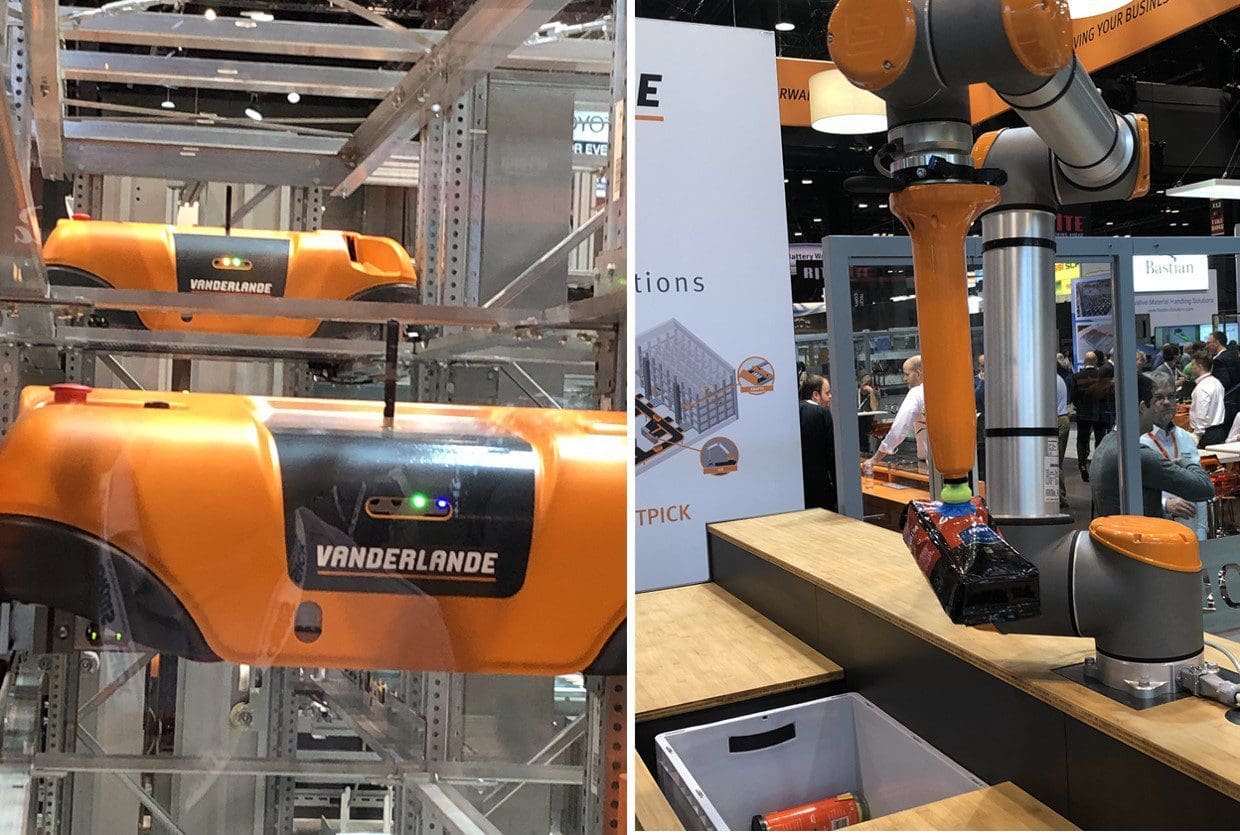 Vanderlande introduced its 3D shuttle system about 5 years ago, focused on spare parts and component fulfillment. Earlier this year, Vanderlande launched Fast Pick, its 2D shuttle system that offers greater throughput. The 2D shuttles have built-in sequencing, removing the requirement for conveyor loops. The built-in sequencing and substantial throughput increase are desirable qualities for high-volume e-commerce fulfillment operations.
Vanderlande introduced its 3D shuttle system about 5 years ago, focused on spare parts and component fulfillment. Earlier this year, Vanderlande launched Fast Pick, its 2D shuttle system that offers greater throughput. The 2D shuttles have built-in sequencing, removing the requirement for conveyor loops. The built-in sequencing and substantial throughput increase are desirable qualities for high-volume e-commerce fulfillment operations.
Vanderlande also exhibited its new Smart Item Robotics (SIR), performing bin-to-bin item picking. The exhibited system utilized a suction gripper, UR arm, and software intelligence from Smart Robotics, a Vanderlande investee. The solution’s focus was on stacking for high fill rates per tote. SIR is currently running in a pilot system. Vanderlande also noted that technology from Fizyr will be utilized for image recognition capabilities in the future.
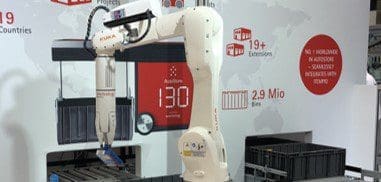 Swisslog exhibited its item-picking robotics solution, ItemPiQ. The exhibited solution used a hybrid three finger mechanical gripper with suction device on a KUKA Agilus robot. 3D vision technology is used for object feature recognition and to determine grasping points. ItemPiQ is being promoted as an extension to goods-to-person solutions such as Swisslog’s AutoStore deployments.
Swisslog exhibited its item-picking robotics solution, ItemPiQ. The exhibited solution used a hybrid three finger mechanical gripper with suction device on a KUKA Agilus robot. 3D vision technology is used for object feature recognition and to determine grasping points. ItemPiQ is being promoted as an extension to goods-to-person solutions such as Swisslog’s AutoStore deployments.
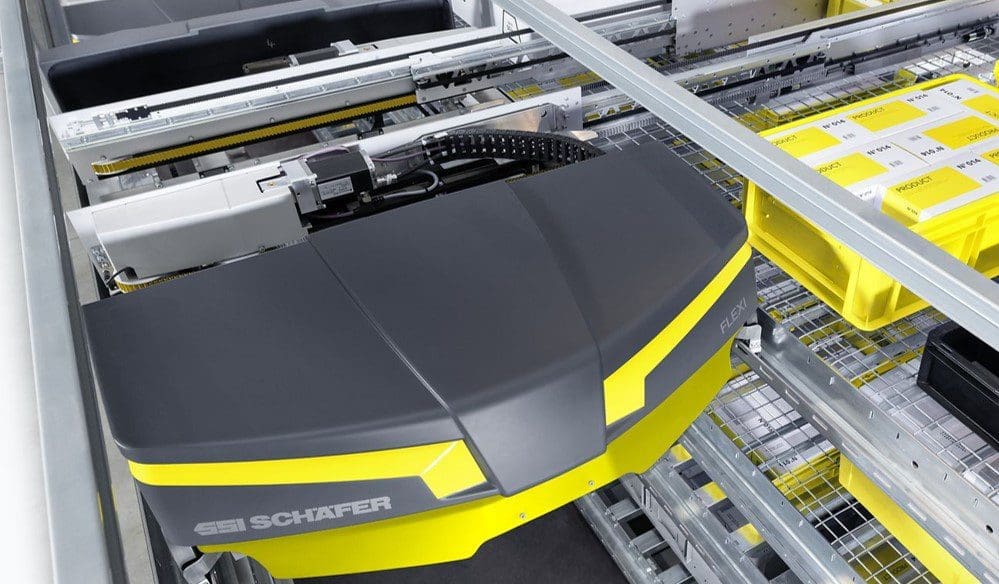 SSI Schaefer was exhibiting a number of automation systems, including the SSI Flexi Shuttle that features a universal load handling device with adjustable width, allowing it to adapt to a wide range of loading units and dimensions. However, I found discussions on the 3D-Matrix Solution, SSI’s integrated storage, buffering, and sequencing system, to be most interesting. Also interesting was SSI’s new Labor and Resource Management software solution. Although labor management is a well-established set of warehouse software functionality, SSI Schaefer’s solution is differentiated due to its focus on both traditional manual tasks such as picking, as well as tasks in support of automated warehouses, such as tote decanting, and the associated metrics, tasks, and resource forecasting for automated warehouses.
SSI Schaefer was exhibiting a number of automation systems, including the SSI Flexi Shuttle that features a universal load handling device with adjustable width, allowing it to adapt to a wide range of loading units and dimensions. However, I found discussions on the 3D-Matrix Solution, SSI’s integrated storage, buffering, and sequencing system, to be most interesting. Also interesting was SSI’s new Labor and Resource Management software solution. Although labor management is a well-established set of warehouse software functionality, SSI Schaefer’s solution is differentiated due to its focus on both traditional manual tasks such as picking, as well as tasks in support of automated warehouses, such as tote decanting, and the associated metrics, tasks, and resource forecasting for automated warehouses.
 Manhattan Associates was exhibiting its integration with Matthews Lightning Pick put-wall product. Manhattan has integrated its WMS with Matthews Lightning Pick dozens of times in the field, to point of productization. Discussions at the booth surrounded Manhattan’s recently released WES that provides the ability to orchestrate across man and machine. I found the partnership with Kindred and the integration with Kindred Sort particularly interesting. Kindred Sort can be envisioned as a piece picking robot surrounded by a circular array of put-walls. Manhattan has developed a number of integration touch points. For example, Manhattan downloads tote item info to Kindred Sort, then Manhattan receives the tote induction message from the photo eye scan informing the WMS that the tote and its items are at the bot location. Finally, the WMS receives a message when the cubby has cleared. These communications provide the inputs to measure dwell time and provide machine performance insights. Also, the “cubby clear” message can trigger Manhattan’s order streaming to send more items to the bots when capacity is available.
Manhattan Associates was exhibiting its integration with Matthews Lightning Pick put-wall product. Manhattan has integrated its WMS with Matthews Lightning Pick dozens of times in the field, to point of productization. Discussions at the booth surrounded Manhattan’s recently released WES that provides the ability to orchestrate across man and machine. I found the partnership with Kindred and the integration with Kindred Sort particularly interesting. Kindred Sort can be envisioned as a piece picking robot surrounded by a circular array of put-walls. Manhattan has developed a number of integration touch points. For example, Manhattan downloads tote item info to Kindred Sort, then Manhattan receives the tote induction message from the photo eye scan informing the WMS that the tote and its items are at the bot location. Finally, the WMS receives a message when the cubby has cleared. These communications provide the inputs to measure dwell time and provide machine performance insights. Also, the “cubby clear” message can trigger Manhattan’s order streaming to send more items to the bots when capacity is available.
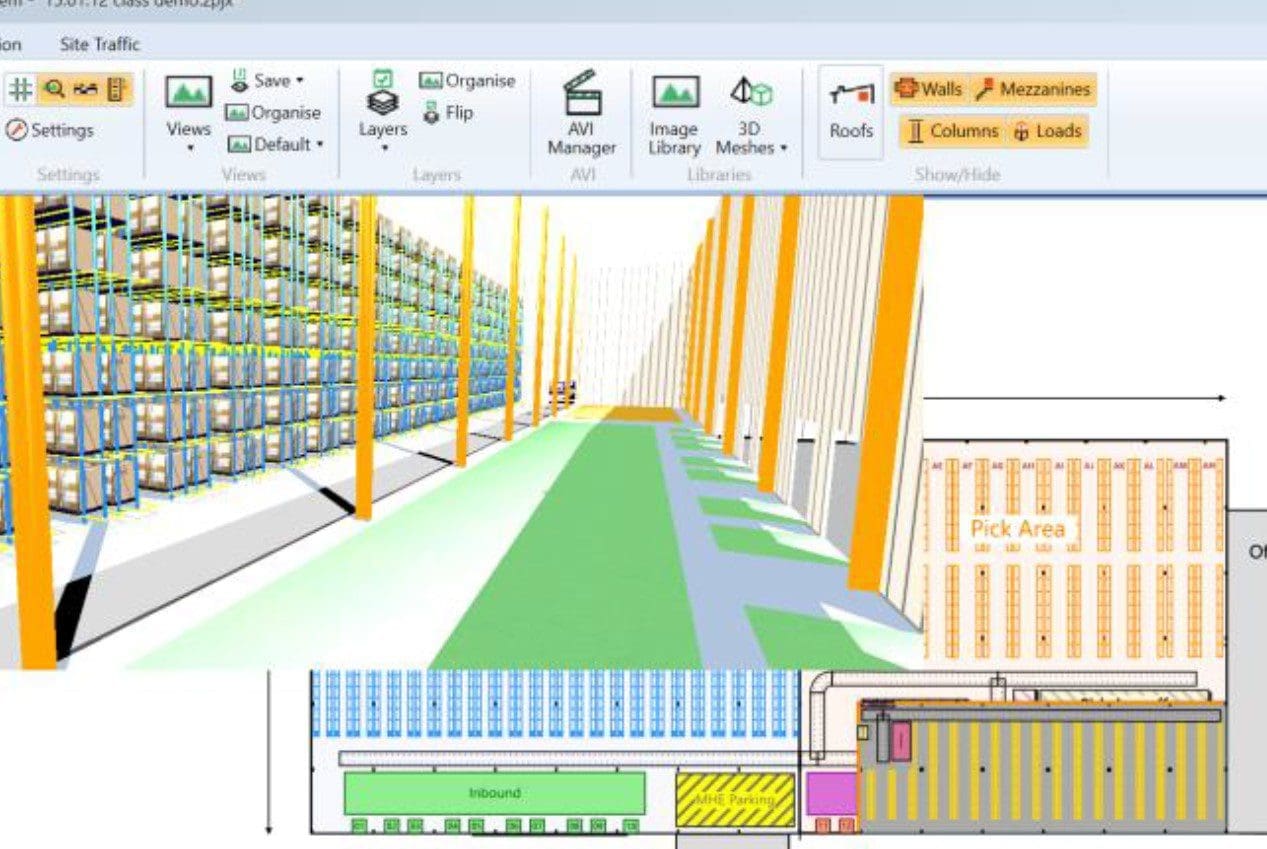 HighJump was exhibiting its CLASS warehouse design and simulation solution. CLASS entered the HighJump product portfolio through Körber Logistics Systems sister company, Centriq. CLASS is an intuitive simulation tool that can be used directly by the end-user. HighJump sees it as a valuable addition to its portfolio in today’s environment of constant change that places a premium on adaptability. The tool is well-suited for incorporating efficiencies in the planning phase. It can be used for projecting future requirements, simulating the performance of various warehouse configuration options given those requirements, and comparing plan vs. actual on an iterative basis as part of a continuous warehouse improvement initiative.
HighJump was exhibiting its CLASS warehouse design and simulation solution. CLASS entered the HighJump product portfolio through Körber Logistics Systems sister company, Centriq. CLASS is an intuitive simulation tool that can be used directly by the end-user. HighJump sees it as a valuable addition to its portfolio in today’s environment of constant change that places a premium on adaptability. The tool is well-suited for incorporating efficiencies in the planning phase. It can be used for projecting future requirements, simulating the performance of various warehouse configuration options given those requirements, and comparing plan vs. actual on an iterative basis as part of a continuous warehouse improvement initiative.
 JDA Software focused on its expanding digital ecosystem. First and foremost was the company’s recently announced partnership with Panasonic to joint develop solutions, including JDA Luminate Warehouse Tasking with Panasonic Visual Sort Assist. The solution is directed at improving warehouse package sorting by utilizing scanning and image projection capabilities integrated with the WMS to provide real-time insights and enable dynamic decision making. JDA also noted its progress toward migrating its platform to Azure as a milestone in its development of a comprehensive digital ecosystem able to ingest and apply data from automation and other smart devices.
JDA Software focused on its expanding digital ecosystem. First and foremost was the company’s recently announced partnership with Panasonic to joint develop solutions, including JDA Luminate Warehouse Tasking with Panasonic Visual Sort Assist. The solution is directed at improving warehouse package sorting by utilizing scanning and image projection capabilities integrated with the WMS to provide real-time insights and enable dynamic decision making. JDA also noted its progress toward migrating its platform to Azure as a milestone in its development of a comprehensive digital ecosystem able to ingest and apply data from automation and other smart devices.
















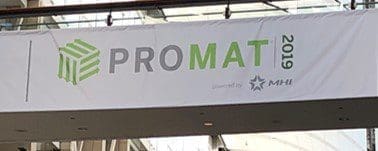

What was Dematic showing? Considering they are the elephant in the North American market, keen to hear what they were exhibiting.